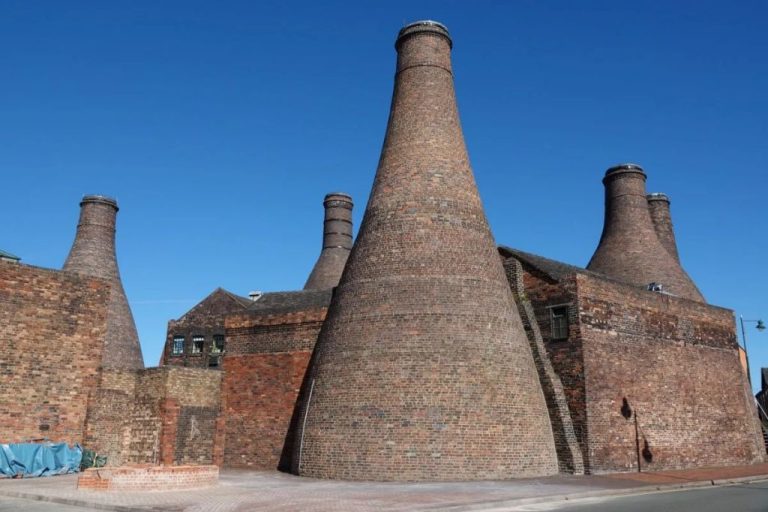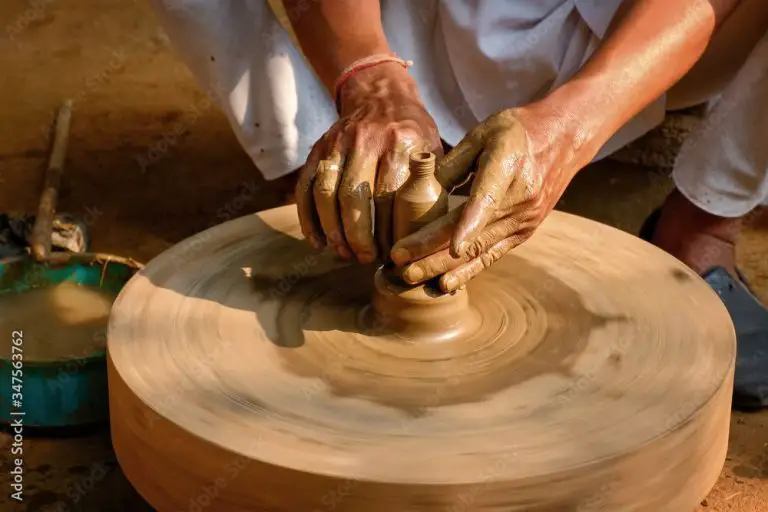Are Clay Smoking Pipes Good?
Clay pipes have been used for centuries to smoke tobacco. First developed in Europe in the 16th century, these pipes were originally made from clay for its heat resistance and absorbency. Clay pipes became extremely popular through the 17th and 18th centuries, eventually spreading to colonies in America and beyond.
Clay pipes have some advantages but also considerable downsides. On the plus side, clay pipes are inexpensive, don’t affect the tobacco flavor much, and can be beautifully decorated as an artform. However, they break easily, tend to crack and clog, and can have negative health effects from secondhand smoke. The porous material also absorbs tobacco tars and nicotine, requiring frequent replacement.
This article examines whether clay pipes are truly a “good” option for smoking tobacco. While clay pipes have a long cultural tradition, tobacco smoking comes with inherent health risks that must be weighed against any benefits. The article explores the pros, cons, alternatives, and larger impact of using clay pipes to smoke tobacco.
Pros of Clay Pipes
Clay pipes have several advantages that make them appealing smoking devices for some tobacco enthusiasts:
Inexpensive – Clay pipes are very affordable, often selling for just a few dollars each. This makes them a budget-friendly option compared to briar or meerschaum pipes.
Disposable – Since clay pipes are so inexpensive, many smokers consider them disposable items. Once the pipe bowl becomes caked with tar, it can simply be discarded and replaced with a fresh, clean pipe.
Natural material – Clay is a natural, earthy material, which some prefer over industrial materials like plastic or acrylic. Clay pipes provide a raw, organic smoking experience.
Cool smoke – The clay material tends to absorb heat and cool the smoke. This produces a smooth, mellow smoking sensation on the tongue and throat compared to very hot smoke.
Cons of Clay Pipes
While clay pipes have some benefits, they also have some significant drawbacks that should be considered. Some of the main cons of using clay pipes include:
Can crack or break – Clay is brittle and pipes made from it can easily crack or break, especially the long stems. Dropping a clay pipe or knocking it against a hard surface can cause it to chip or shatter. They require careful handling.
Absorb moisture – The porous nature of clay means that clay pipes will absorb moisture from the smoke and saliva when used. This can lead to gurgling sounds, unpleasant tastes, and difficulty drawing smoke through a wet pipe.
Need frequent replacement – Due to their fragile nature and moisture absorption, clay pipes need replacement frequently with regular use. The stems and bowls wear out over time and need to be changed often.
May have lead – Historically, some clay pipe glazes contained lead, which could leach into the smoke. Modern clay pipes use lead-free glazes, but antique or improperly made pipes may still pose a lead exposure risk.
Health Concerns
One of the biggest health concerns when smoking from traditional clay pipes is the risk of lead contamination. Clay contains trace amounts of lead that can transfer into the smoke when the pipe is heated. The lead then enters the body when inhaling the smoke. Long term lead exposure can lead to a multitude of health problems, especially nervous system damage. Many antique clay pipes contained high amounts of lead due to older glazing techniques, putting users at severe risk of lead poisoning.
Another health concern with clay pipes is the harshness of the smoke. Clay does not filter the smoke as well as other modern pipe materials like briar or corncob. This means that toxins and tar can more easily reach the lungs. The hot smoke from a clay pipe can irritate the throat and cause coughing in some users. The material also absorbs moisture, which can make the smoke hot, dry, and uncomfortable.
Tobacco Health Risks
Tobacco smoke contains over 7,000 chemicals, including hundreds that are toxic and about 70 that can cause cancer.
Smoking increases the risk of numerous cancers in various parts of the body. The most well-known is lung cancer – about 80-90% of lung cancer deaths are caused by smoking. But smoking also increases the risk of cancers of the mouth, lips, nose and sinuses, larynx, pharynx, esophagus, stomach, pancreas, cervix, kidney, bladder, blood, and acute myeloid leukemia.
Beyond cancer, smoking significantly increases the risk of cardiovascular diseases like heart attacks, strokes, and heart disease deaths. Smoking damages blood vessels, contributes to atherosclerosis, raises blood pressure and heart rate, and decreases the oxygen in the blood. This damages the entire cardiovascular system.
Alternatives to Clay Pipes
While clay pipes have a long history of traditional use, there are several alternative materials that have become popular for making smoking pipes:
Corn Cob: Corn cob pipes first emerged in the late 19th century in the United States. They are made from dried corn cobs with a wood stem inserted into a bored out center. Corn cobs are an extremely inexpensive and disposable option, making them a popular choice for beginning pipe smokers.
Glass: Glass pipes allow smokers to see the contents inside and come in a vast array of colors and artistic designs. However, they can easily break and some find them uncomfortable to hold when warm.
Wood: Many different woods are used to carve smoking pipes, with briar being one of the most prized. Briar wood pipes are known for being long-lasting and developing a sweet flavor over time. Other popular woods include cherry, maple, and olive.
Metal: Metals like aluminum, steel, and brass can be machined into smoking pipes, which are appreciated for their sleek designs. However, metal can impart unwanted flavors and care must be taken to keep the material cool.
Meerschaum: Meerschaum is a soft white mineral that can be easily carved into ornate pipe shapes. It produces a cool, dry smoke and gradually changes color with use. However, meerschaum pipes are fragile and require careful handling.
Other Tobacco Options
For those looking to move away from clay pipes, there are several other tobacco options to consider:
Cigars
Cigars are larger, tightly rolled bundles of tobacco leaves. Many enjoy the flavor nuances and ritual of smoking cigars. However, they also come with health risks from tobacco and generally contain higher levels of toxins than cigarettes.
Vaping
Vaping involves inhaling vapor from e-cigarettes or vape pens. These heat a liquid into an aerosol that users inhale. While generally considered less harmful than smoking, vaping still exposes users to addictive nicotine and other potentially harmful chemicals.
Chewing Tobacco
Smokeless tobacco products like chewing tobacco and snuff are placed in the mouth. They contain over 30 cancer-causing chemicals and increase the risk of oral cancers. While not risk-free, they avoid risks from inhaling smoke into the lungs.
Snus
Snus is a steam-pasteurized, smokeless tobacco product popular in Scandinavia. It comes in sachets placed between the gums and lips. While lower risk than smoking, snus still contains tobacco and nicotine. It increases risks for mouth cancer and cardiovascular disease.
Quitting
The healthiest option is to quit tobacco entirely. Nicotine is highly addictive, so this can be challenging. However, counseling, medications, nicotine replacement therapy and support groups can all help tobacco users quit successfully.
Culture
Clay smoking pipes have a rich cultural history and continue to play an important role in rituals and as collectibles today.
Historical associations
Clay pipes first emerged in England in the late 16th century and quickly became popular throughout Europe and the American colonies over the next 200 years. They were the dominant form of tobacco smoking during the 17th and 18th centuries. Clay pipes are closely tied to maritime culture as sailors often smoked pipes. They are also associated with important historical figures like Sir Walter Raleigh.
Collectible value
High quality clay pipes were often elaborately decorated with designs and motifs. Intact, antique clay pipes are sought after by collectors today. Museums display particularly fine or rare examples of old clay pipes. The material is fragile though, so intact pipes from before the 19th century are scarce.
Ritual use
Many cultures integrated smoking pipes into ceremonies and rituals. Peace pipes used in some Native American tribes were often made of clay. In Eastern countries like Japan and Indonesia, clay pipes were used for smoking opium. Today, clay pipes remain part of cannabis culture and some other subcultures.
Environmental Impact
One of the benefits of clay pipes is that they are made from natural, biodegradable materials like clay and wood. Unlike plastic and glass pipes, clay pipes will break down naturally over time without harming the environment.
Clay pipes also tend to have a relatively short lifespan compared to pipes made of more durable materials. The average clay pipe may only last a few months with regular use before needing replacement. This means that clay pipes do not linger in the environment for years after being discarded like plastic and glass.
The biodegradable and short-lived nature of clay pipes makes them one of the more environmentally friendly options for smoking tobacco. Waste clay pipes will decompose back into the earth after use rather than piling up in landfills or polluting the natural landscape.
Conclusion
Clay pipes have advantages like a neutral flavor that doesn’t affect the tobacco and a lower environmental impact. The downsides are that clay pipes are fragile, require cleaning and maintenance, and can still pose the health risks associated with smoking tobacco.
For those who enjoy pipe smoking as an activity and ritual, using a clay pipe provides some benefits compared to commercial materials. However, due to the health concerns surrounding tobacco, it’s difficult to recommend any type of smoking as completely “good.” Those wishing to continue pipe smoking may want to consider transitioning to a non-tobacco smoking blend or using clay pipes only on occasion.
Ultimately, clay pipes offer a more natural, sustainable option compared to many modern materials. But their benefits should be weighed carefully against the risks of smoking itself. Moderation and care are advised.





